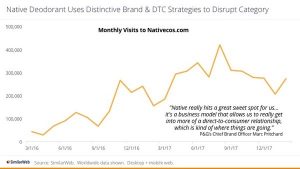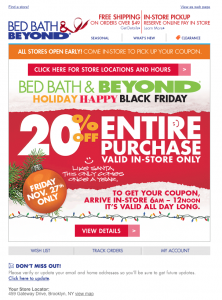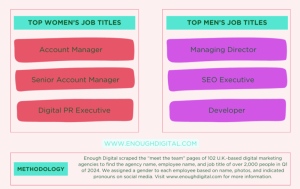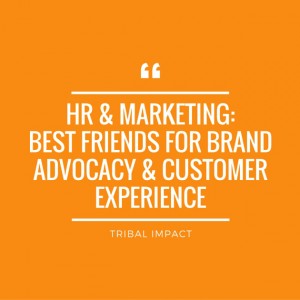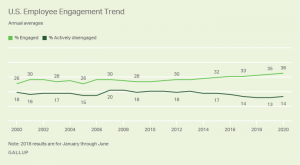Designing substance behind the subject line
Last month, we at Conversio developed a guide for crafting the perfect email subject line. However, coming up with unique and engaging email subject lines is only a small part of the battle.
Once your intended recipient has made the decision to open your email based on the promise of the subject line, the actual content of your email newsletter has to deliver. If your newsletter fails to fulfill the promise that compelled the reader to click in the first place, they will have every reason to disengage with your brand and turn their attention to something else in their inbox, depriving you of the opportunity to further guide them on their purchasing journey.
Countless worthless emails

We’ve all been subjected to countless examples of worthless email newsletters, which means everyone should have a pretty good idea of what a bad one looks like. Email newsletters are exceedingly common and almost every company utilizes them in some way, so why are so many of them lacking in quality? It seems as though even the marketers who are crafting these lackluster emails have plenty of exposure to bad examples, yet many of them aren’t able to create a solid strategy for delivering compelling newsletter content that will fulfill their sales and marketing goals.
But enough about the boring emails we’re all bombarded with on an almost daily basis.
Instead, let’s focus on what goes into creating an email newsletter that will have your recipients actually glad that they decided to click and continue their journey with your store.
Emphasis on substance and value
Not all types of marketing communication are created equal, but the overarching idea behind effective marketing messaging is the same across platforms: delivering substance and value. Of course, there are many more details that go into creating high-quality email content, such as design, personalization, customer segmentation, etc., but if you don’t have substance and value at the heart of your messaging, it’s likely going to fail to connect with the audience in the intended manner.
There are plenty of unsubstantiated stories that have been going around over the last few years making grand declarations about the death of email marketing. They assert that many Millennials don’t even check their email accounts anymore, that they digitally communicate entirely through social media channels now, and that the introduction of the “promotions” tab on various email provider apps has rendered Ecommerce newsletters useless. It’s compelling stuff from a story angle, but the statistics tell a different story entirely.
You can still reach customers across numerous demographic groups through email marketing, and separate tabs for promotional content actually help marketers in key ways.
The email newsletter marketing is far from dead; it has just evolved in recent years.
It’s more important than ever to optimize for mobile platforms because many younger consumers exclusively check email on their smartphone and tablet devices. Also when promotional content is kept in a separate tab in a user’s inbox, they are more likely to view that tab specifically when they want to search for shopping deals. This gives companies a more active audience since brands no longer have to compete directly with other content — such as personal correspondence — in recipients’ inboxes.
The main issue is that email newsletters can’t just be thrown together because you think there’s an operational imperative to have one. Your strategy for telling a cohesive story that provides value for a specific audience and guides them through various stages of the purchasing process needs to be clearly defined. And it must fit within the larger structure of your broader marketing and sales strategies.
Email marketing for Ecommerce companies is alive and well, and when practiced correctly it can forge a crucial and lasting connection between the customer and the brand, contributing sustained value to both parties.
When they’re at their best, email newsletters share a compelling story with the reader. They’re informative, educational and they provide clear directions on how the reader should continue if they want to gain more value from your company.
Connecting directly with customers
First, email newsletters can convey a dense amount of information very quickly. Whereas tweets generally need to reference a link to something more substantial, or billboards need to grab the audience’s attention with prominently displayed messaging, email newsletters can transmit a surprising amount of useful information to the reader in their own format. While they also generally contain links (typically in the form of a CTA), they can be standalone informational assets too.
Also, emails are intensely personal and delivered to a very specific reader. When you create a television or radio ad or even an ad for a website or social media channel, you really don’t have that much control over who views it beyond demographic data analysis. When you send an email newsletter, you are delivering that content to a specific audience which allows for effective personalization and engagement with that subscriber.

It’s also important to note that email newsletters can provide consistent engagement with your customers, and their effectiveness can be intricately tracked and measured. Innovative marketing automation allows you to achieve incredible things with your email newsletters, and it’s possible to communicate value frequently and effectively to a large audience at relatively low cost.
Before we get into the different types and specific components of a great email newsletter, it’s worth evaluating whether or not an email newsletter marketing campaign is a good fit for your company.
I know, we just spent two whole sections discussing the potential benefits of email newsletters done right, and now there’s a chance they might not even be applicable for you?
While email newsletters are a viable strategy for many companies, there are certain situations where other opportunities may be more fruitful to pursue, just like when considering any other marketing tool. Ecommerce is generally an industry that stands to benefit from email newsletters, but an examination of your organization’s specific business realities will tell you whether or not the strategy is likely to realize dividends for you.
Aligning newsletter marketing to broader business goals
The first step in any such evaluation is a careful consideration of your company’s goals. You need to specifically define what it is you hope to get out of an email newsletter campaign. If you’re trying to nurture relationships your subscribers more effectively, you may find success almost instantly with a well-planned newsletter campaign. Also, if you want to boost conversions for your website, crafting engaging newsletter content could help you expertly steer your prospects through the customer buying journey, resulting in a greater percentage of sales per website visitors.
Alternatively, if your main marketing goals don’t easily align with what email newsletters are designed to accomplish, you may be better off spending your money elsewhere. Trying to maintain a slapdash email newsletter initiative that isn’t supported by the proper resources, planning and attention can be far more damaging than not sending newsletters at all. For instance, if one of your main goals is to expand the social reach of your content marketing, then it would be advisable to invest more time and money developing a robust social engagement strategy. Therefore, you would want to leave email newsletters for a time when you can focus more attention on them.
Allocating the right resources
Another major consideration in this decision is taking an honest assessment of the availability of resources in pursuit of your email newsletter goals. It can’t be stressed enough: if the implementation of the newsletter campaign is haphazard, unfocused and lacking in value, then it isn’t the right time to go down this road. Marketing automation can help you achieve results and scale your email campaign as your company grows, but you still have to have the ability and willingness to devote enough to the initiative to ensure its success.
Before you get started, decide on a plausible budget, schedule of availability for those who will be contributing and a plan for gathering support for the initiative from other areas of the company (IT, human resources, design, etc.). Once you have a clear understanding of the requirements for your proposed email newsletter campaign, as well as the available resources, you can work with the stakeholders involved to make an informed decision about the program’s feasibility for your organization. The most important thing is that your decision about whether or not to implement an email newsletter campaign is based on sound data and tied to realistic goals for the company’s future.
Carefully considering what content to push
Finally, before you can begin crafting your content and preparing your newsletter to be sent, you need to consider what type of email newsletter will best communicate value for your intended audience. There are dozens of different categories of email newsletters, and several of them will be explored in greater detail in the coming sections. Some companies tend to conflate their marketing email newsletter strategy with that of an internal company newsletter, such as one that might be sent by senior leadership or the human resources department. These newsletters are packed full of various types of information from employee birthdays and personal stories to industry news to available open positions. Many marketers try to follow suit with their customer-facing email newsletters, inserting as much information in one email as possible so as to act as a catch-all for a wide audience.
The problem with this strategy is that you really can’t be everything to everyone, and this lack of clarity can confuse the reader and cloud any potential value they could take away from the email. Consider specifically what your audience needs to see, how it will help in relation to your stated goals for your newsletter campaigns and what targeted information you can include to nurture the relationship with your readers.
For your email newsletter to resonate with audiences, it has to directly speak to their interests and needs, demonstrate value, and arrive in their inbox at opportune times. That said, you must also apply other marketing best practices.

1. The importance of personalization
You can’t have a substantive discussion about email marketing without touching on personalization. There is a myriad of data available to suggest that personalized content is more effective than non-personalized content, that it’s preferred by consumers and that more marketers wish to incorporate personalization into their strategies. Integrating at least some measures of personalization is a necessity if you want to get the most out of your email newsletter initiative, and thankfully there are numerous ways you can go about this ranging from exceedingly simple solutions to intricate and complex processes.
Although it may sound elementary, using names in your email newsletters is one of the easiest and most overlooked ways to inject a personalized element into your message. This starts with addressing your recipient by their first name, which forges an instant connection between company and reader, and puts the two parties on equal footing. People appreciate being addressed by their name in an email because it enhances the perception that this content was created for and sent to them specially.
The other element that must be considered is the name of the sender. In many situations, having the sender’s field include a real person’s name, rather than just the name of your brand (or something such as “[brand name] deals”), is another route for engaging with the recipient on a more personal level. Once customers have become accustomed to receiving emails from that specific sender, you can use this familiarity to ensure future marketing correspondence from your online store will always be well-received.
Including product recommendations based on your customer’s browsing and purchasing history with your store is another way to use personalization to your advantage. Just consider how well Ecommerce giant Amazon does this for Amazon Prime members. They tailor all of their emails to the individual history of the customer, paying particular attention to items that have been viewed multiple times or put in a shopping cart and later abandoned. Now, you probably don’t have as sophisticated a data gathering operation on your customers as Amazon does, but you can still learn from their techniques and craft your emails based on the information you have already collected.

2. Visual components and branding concerns
Email is an intensely visual medium, which means that the design of your newsletter is as important in some ways as the content. First and foremost is the header, which is typically the first thing the reader will see and sets the tone for the rest of your newsletter. It’s worth investing appropriate resources to get the header right, as consistency throughout your email newsletter experience is paramount.
Ideally, the header should compliment your brand’s visual style and engage the reader’s senses to encourage them to continue reading. It should always come across as polished and professional in an effort to avoid being mistaken for annoying spam.
The design of the footer also plays a crucial role as it wraps up the newsletter and provides helpful links such as social sharing buttons, contact information or call-to-actions. Many companies like to hide their unsubscribe links as discreetly as possible in the footer, but this actually is counterproductive. If someone actively wants to unsubscribe from your emails, you should honor their wishes because they may mark future correspondence as spam or ignore your emails outright.
Not to be overlooked is the importance of alt text in an email newsletter. In a perfect world your recipient would view your email exactly the way it leaves your server, but in reality that isn’t always the case. Whether it’s because the user has images turned off from unknown senders or the email client formatted something differently, many times images don’t appear as the sender intended. In these cases, alternative text (also known as “alt text”) appears in a box on the screen. A best practice here would be to assign alt text to each image so that you supply email recipients with the information they need from your newsletter when your images fail to properly render.
3. Email schedule and frequency
Finding the optimal frequency for your email newsletters is often a delicate balance to maintain. You don’t want to overwhelm your audience with countless emails that have them searching for the unsubscribe link, but you also want to ensure that your brand remains a reliable and frequent-enough presence in their inbox.
In most cases, a set schedule of either once every other week or once per month will deliver the ideal combination of saturation and anticipation. Of course, if you’re having trouble coming up with content to fill your newsletter on a regular basis, sending out one every two months or each quarter will still allow you to stay on your audience’s radar. Just be mindful that these newsletter sends do not unintentionally overlap with other marketing messages so that you minimize inundating your audience with excessive emails.
4. Compelling call-to-actions (CTAs)
When it comes to CTAs in email newsletters, you can use one simple principle to guide your strategy: make it obvious what you want your reader to do next. Don’t expect that your recipient is going to do the legwork themselves to figure out what action they can take to further the relationship. They might be willing to do so if they are exceptionally motivated, but it’s not worth the risk.
Email recipients are easily distracted, both by the looming presence of so many other emails to get to and the entire digital world at their fingertips. If it’s not immediately clear to them how they should proceed to find out more, you may lose them in an instant. The good news is that you really don’t have to overthink an effective CTA. Stick to one prominent prompt and place it in a spot where they can’t miss seeing it.
5. Segmentation, list culling and subscriber re-activation
Curating several well-maintained lists of segmented customers for your email content should be high on your list of priorities. Research indicates that segmented campaigns result in increased open rates and clickthroughs, and lower bounce rates and fewer unsubscribes. The results speak for themselves and the best way to succeed with segmentation is to carefully monitor your lists and use triggers to maintain them over time.
This practice eventually leads you to list culling. Most marketers believe that at least 26% of their list subscribers are inactive and best practices denote that you should periodically identify inactive subscribers and remove them from your main mailing lists. It’s an important tactic for increasing the deliverability of your emails and engaging more readily with your active subscribers. At least once per year (preferably every six months) you should send an email to your suspected inactive subscribers with a new opportunity for them to opt-in to receive additional content. If they still don’t respond, let them go and focus on the customers you’re actually reaching.
6. HTML vs. plain text: optimizing for both
HTML vs. plain text in email campaigns is one of the most hotly-debated topics in memory. Each option has its benefits and drawbacks. HTML allows for more creativity and provides unique avenues for engagement through imagery, however it has to be coded perfectly in order for everything to format correctly. Broken HTML tags can result in spam filters being triggered and the sender’s address being permanently flagged. Meanwhile plain text is more reliable in terms of deliverability and it’s more forgiving in its formatting. However, if you rely only on plain text you’ll be sacrificing a lot in terms of design.
The best advice is to optimize for both types of emails with your newsletters. Anytime you send out an HTML email, test it several times to ensure that it is properly coded and renders effectively across desktop, tablet and mobile devices. Also, use available tools to optimize a plain-text version along with the HTML content so your audience will see a compelling and thoughtfully-crafted newsletter regardless of the email client they use.
Every newsletter has to have a distinct purpose, and it’s that purpose that prevents it from becoming just a collection of jumbled information with no clear story backing it up.
Well-constructed newsletters clearly communicate their value to the reader upfront, and they also contain an intelligible CTA that sets the prospect on a continued path with your company in an effort to meet your previously stated goals. Many times this path leads to a sales conversion, but every email newsletter doesn’t necessarily have to have a conversion as the immediate desired outcome. Newsletters can be employed simply to inform, to encourage participation in a survey or other questionnaire, to solicit product reviews, and more. This is by no means an exhaustive list, but nine common types of content for email newsletters are:

1. Company updates
If your company has recently hit major growth milestones, signed a deal with an important new brand partner or product supplier, or won an industry award, then your email newsletter is a great place to tell your audience about it. They’ll want to hear about your accomplishments too and show their love.
2. Product innovations
Email newsletters give you significantly more space to write in-depth primers on product innovations when compared to many other marketing channels. They are very useful for generating excitement about upcoming products or new features, as well as giving the audience an insider’s look at the creative process behind the developments.
3. Content round-ups
Not everything in your newsletter has to be unique; there’s nothing preventing you from including excerpts of recent blog posts or other content assets as long as they contribute direct value to the reader. You can even include content round-ups in a newsletter alongside original material specifically crafted for that email.
4. Survey invitations
Show your prospects and customers that you greatly value their feedback by encouraging them to participate in surveys through your email newsletters. When most people do agree to share their thoughts, they generally anticipate seeing the results in order to compare their answers with the general population. Use this as an opportunity to engage them further by following up with an analysis of the survey results when they are available.
5. Giveaways and sweepstakes sign-ups
This isn’t surprising but people like to win things! This is true even when it concerns something that they didn’t anticipate wanting. Promoting giveaways and sweepstakes through email newsletters is a powerful method for introducing interactivity into the relationship between customer and brand, thereby strengthening the connection between the two sides. Also, when readers become accustomed to periodic giveaways from your company, they will be more likely to keep opening your emails on a consistent basis in hopes of seeing another chance to win.
6. Industry news
Depending upon the type of products you sell, major developments in your industry could have ramifications on your customers’ lives. By providing them with helpful summaries and links to relevant sources, you can use your email newsletter to keep them informed about news in your industry that affects them.
7. FAQs and instructional content
You can post answers to frequently asked questions (FAQs) and product instructions on your blog or other pages of your website, but you may also want to consider crafting email newsletters around this information as well. One reason being, you can specifically target customers who purchased a certain product and send them content about their order. Additionally, if people do view your blog post and forget to bookmark it for later use, they can use the increasingly smart search functions on their email client to locate that information faster than through a traditional Internet search.
8. Letter from the CEO
Customers appreciate hearing from someone with an aura of authority, and the leader of your company is the perfect candidate to keep them up-to-date on various successes and challenges, business goals, and stories involving interactions with customers and employees. Correspondence from the CEO helps shoppers feel like they are personally involved in the future of the company, and it offers another engaging way to stay connected with your audience even outside of the typical sales journey.
9. Employee profiles
You can also include inspiring or interesting employee profiles in your newsletter, giving the audience a glimpse behind the brand and into the lives of the people that make your Ecommerce store run. Not only does this strategy provide readers with insider’s information that can help connect them emotionally to the brand, but it also gives you a chance to spotlight many different members of your organization, some of whom may never have the opportunity to be recognized by customers due to their behind-the-scenes roles.
It pays to go over your email newsletters with a fine-tooth comb. Here are five final tips to remember when you design your next email newsletter.

1. Sweat the details
Check your content for proper formatting, proofread for grammatical errors and make sure you don’t have any broken or incorrect links embedded in your email. There are fewer ways to lose credibility in the mind of your reader than by committing these mistakes that can easily be caught with a little patience.
2. Test, test and test again!
Your customers are going to be opening and reading your emails on all kinds of devices, operating systems and email clients. Before pulling the trigger on your newsletter campaign, send test emails of the finished product to yourself on as many different platforms as are feasible. Make sure to hit all of the major options such as Gmail (on multiple browsers and iOS and Android mobile apps), Outlook and Yahoo. You may be surprised how differently an email may render based on the platform a recipient is using, so take the time to fix any kinks before going live.
3. Request reciprocation
One of the great advancements made possible by email newsletters is the ease with which the audience can respond. With snail mail newsletters recipients could clip a coupon and go to the store or fill out a form and mail it in, but that was as interactive as the experience ever got. Email newsletters allow for numerous opportunities for the customer to interact directly with your brand, so don’t be afraid to ask them to do something for you every once in awhile. You can request product feedback in exchange for a special offer, or encourage them to participate in a contest where they have the chance to win a prize.
4. Apply autoresponders
Autoresponders are another tool that will allow you to put powerful automation techniques to work in service of your greater goals. Autoresponders are simple to enable and they can help you prioritize your interactions with new subscribers without having to take your focus away from other aspects of the campaign. They allow you to reach out immediately when someone interacts with your email or subscribes to your newsletter, engaging them at the time when their interest level in your company is at its peak. Remember to treat your autoresponses exactly as you would any other marketing email that is coming from your company; branding concerns, formatting, value-added content, and alt text all need to be stressed when you are designing them.
5. Remember the immense significance of value
As should be the case, it always comes back to delivering value to the consumer. If your newsletter content isn’t valuable to them in some way, then it is ignorable at best and frustratingly annoying at worst. In either case, this isn’t the kind of standard you want to set for your brand interactions with prospects and customers. If you’re running up against the usual monthly deadline for sending out your newsletter and you just haven’t found the appropriate content to fill it, it’s perfectly fine to skip that month and start doing some research for the following interaction. You can work on other marketing strategies to engage with customers during this time.
In designing your next email newsletter, remember that every marketing send should be value-driven instead of an arbitrary marketing requirement. Use newsletters to enhance the customer experience with your Ecommerce brand, or forgo sending your next email newsletter if even you wouldn’t want to read it.
Digital & Social Articles on Business 2 Community(126)
Report Post


